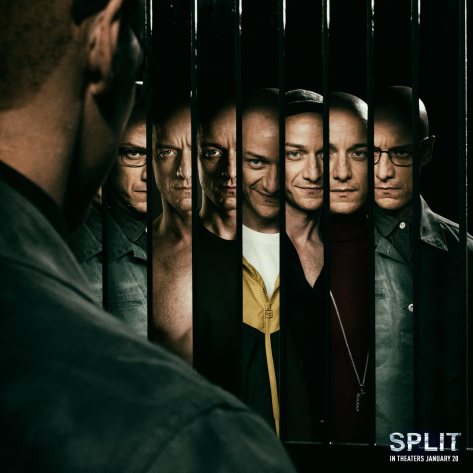By Miguel Santos

M. Night Shyamalan’s latest film Split tells the story of a man with Dissociative Identity Disorder. (Courtesy of Facebook)
The film Split has taken the number one spot on the domestic box office for the third consecutive weekend. Despite this financial success, the movie has received criticism for its offensive and seemingly backwards portrayal of mental illness and the LGBTQ+ community.
Writer and director M. Night Shyamalan is known for making movies that feature horror, unexpected plot twists and complex characters with fluid motives. Split is no exception from this trend. The film focuses on a man named Kevin who has Dissociative Identity Disorder, or DID. According to the “Gale Encyclopedia of Science,” a person with DID “plays host to two or more dissociate personalities or identities” and “each identity has its own unique style of viewing and understanding the world.” In addition, “these distinct personalities periodically control that person’s behavior as if several people were alternately sharing the same body.”
Kevin has 24 distinct personalities, most of which are harmless. However, when a handful of malicious personas repeatedly take over, they cause him to perform atrocious acts. The film follows what happens when Kevin, or one of his personas, kidnaps three teenage girls in order to satisfy his newest and most heinous personality, the Beast.
Mental illness in film is not a novel concept. In many genres, a disorder of the mind may play a crucial role in a movie’s plot. Rain Man, Shutter Island and Silver Linings Playbook are only a few examples of films that feature such illnesses. However, the use of these themes is steadily becoming more controversial as mental illness becomes more prevalent in modern times. It is understandable how lives affected by mental illness may be offended by certain aspects of Split. In fact, many in favor of boycotting the movie on the petition website “care2” reference their own struggles with mental health as the reason for not liking the movie.
Many argue that in today’s day and age, the discussion of mental health is very significant and complex. Depression is one of the most common mental ailments right now. It is an ailment that continues to impact people and their loved ones in the most tragic ways. The Depression and Bipolar Support Alliance estimates that 6.7 percent of the U.S. population age 18 and older are afflicted with Major Depressive Disorder. Clearly, the topic of mental health is not to be taken lightly.
Split does not necessarily mock mental illness or those who suffer through it. In fact, Kevin’s psychiatrist in the film, Dr. Karen Fletcher, represents a sincere and progressive outlook on mental health. This character stresses the importance of supporting people with DID. She truly cares about her patients’ well-being, and often defends these patients against those who do not trust them. Her character demonstrates how the filmmakers understand that it is important to provide aid for people with these ailments.
The fact that mental illness is present in the movie does not seem to be the main issue. The way the film uses DID as a horror trope is what causes a majority of the uproar against Split. Reducing such a complex and important conversation down to a means of scaring audiences has angered those whose lives have been touched by mental illness. The same can also be said about the film’s portrayal of a character who is a cross-dresser.
One of Kevin’s immoral personalities is a sinister woman who is arguably the creepiest character in the movie. Other horror flicks have used the image of transgender individuals to convey feelings of fear and scandal. The care2 website points out that Norman Bates in Psycho and Buffalo Bill in The Silence of the Lambs are previous instances of this trope being used. Again, it would seem as though a topic as relevant and complicated as the LGBTQ+ community is simply being reduced to a scare tactic used in a movie.
Ultimately, Split does not blatantly aim to offend people who are affected by mental illness. M. Night Shyamalan’s unique history of rich plotlines suggests that he wanted to create a horror/thriller with a complex narrative with a main character who has DID. However, mental illness is rightfully a sensitive topic that continues to harm individuals and families at increasing rates. Perhaps it is time for Hollywood to look to other tropes and archetypes when constructing future storylines. Otherwise, the entertainment they provide may be at the expense of someone else’s suffering.
